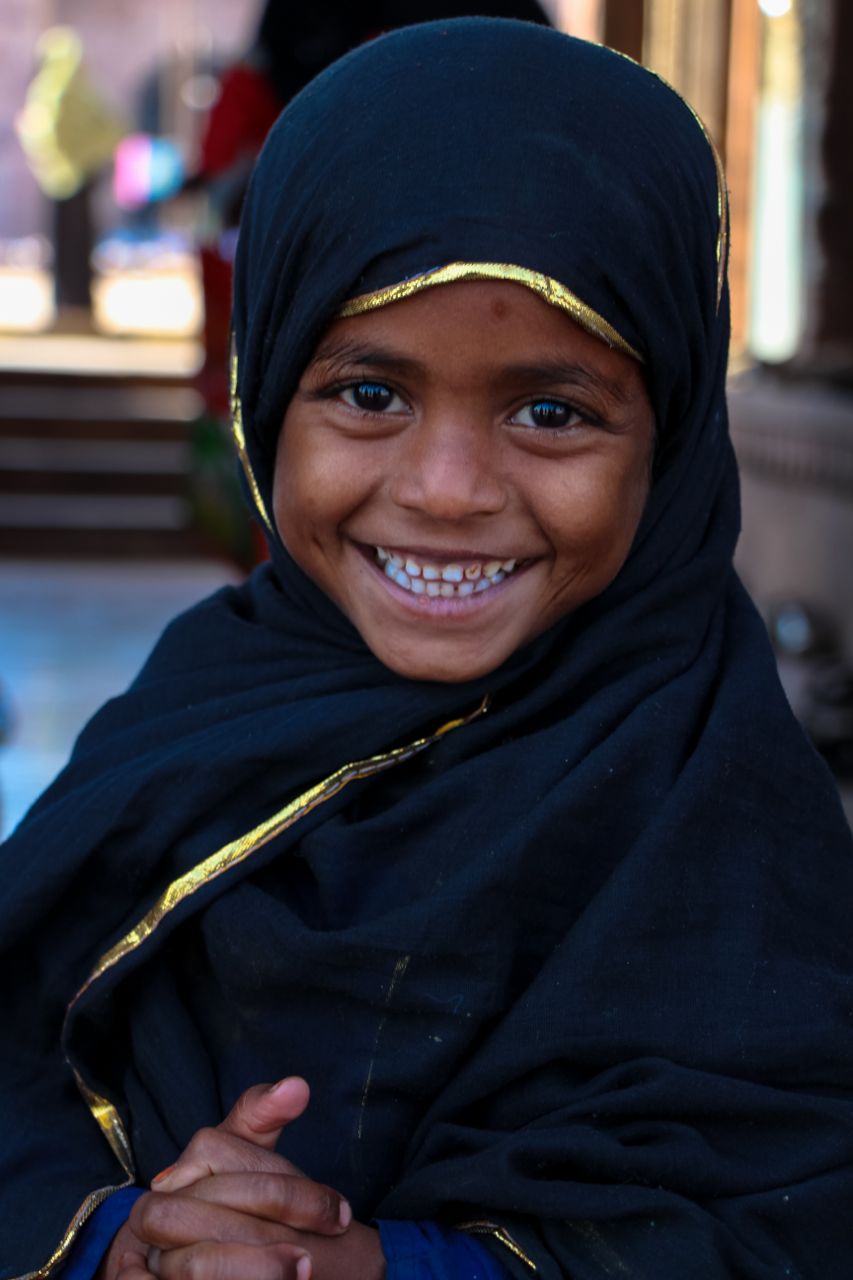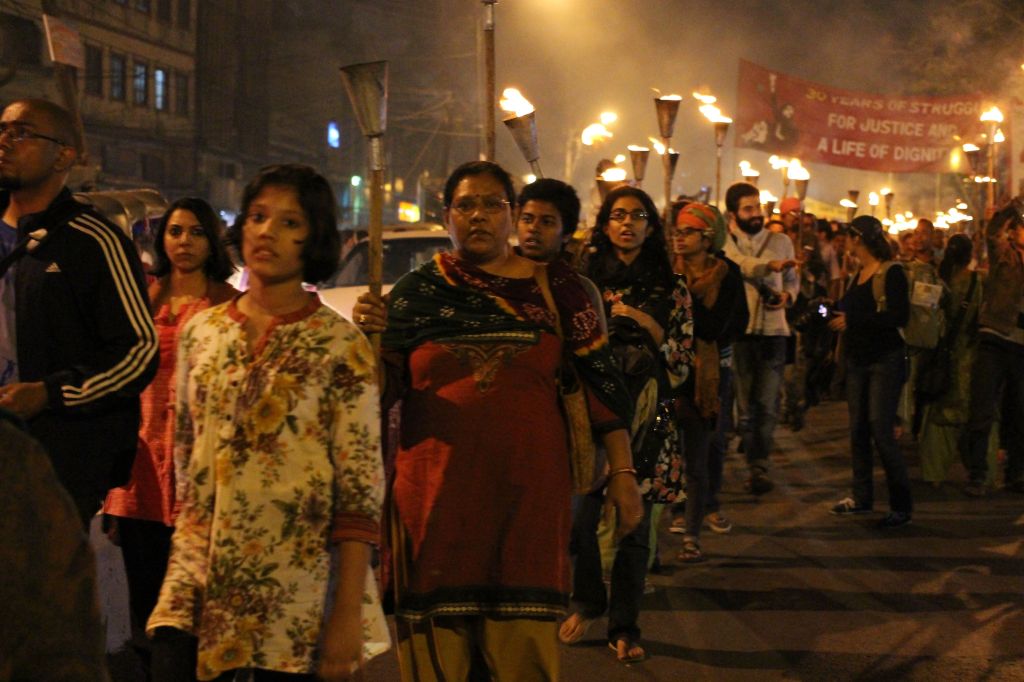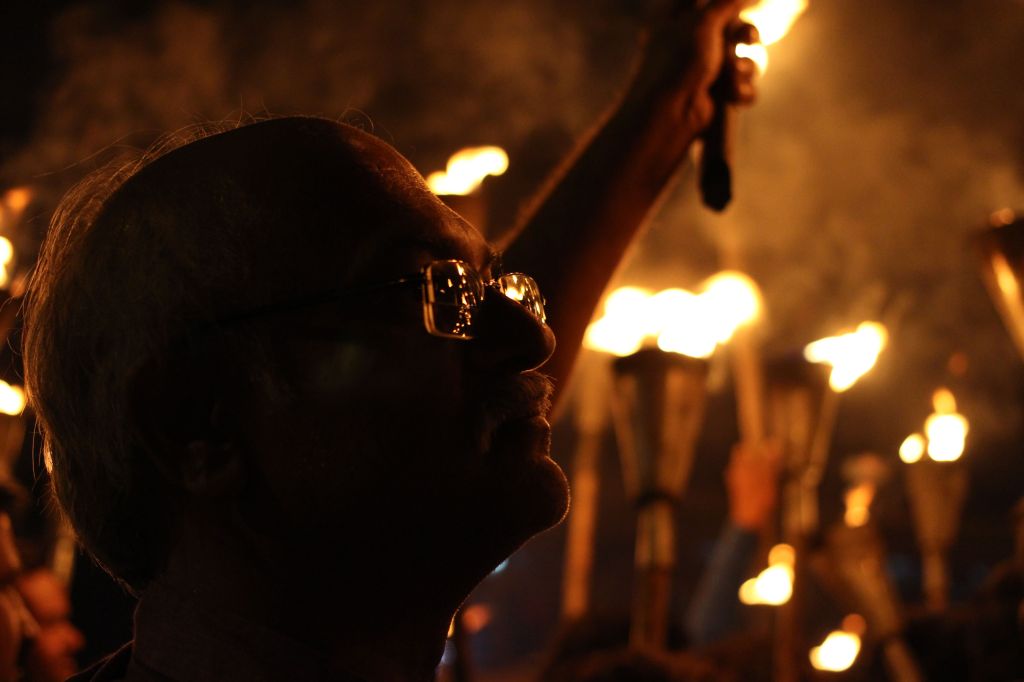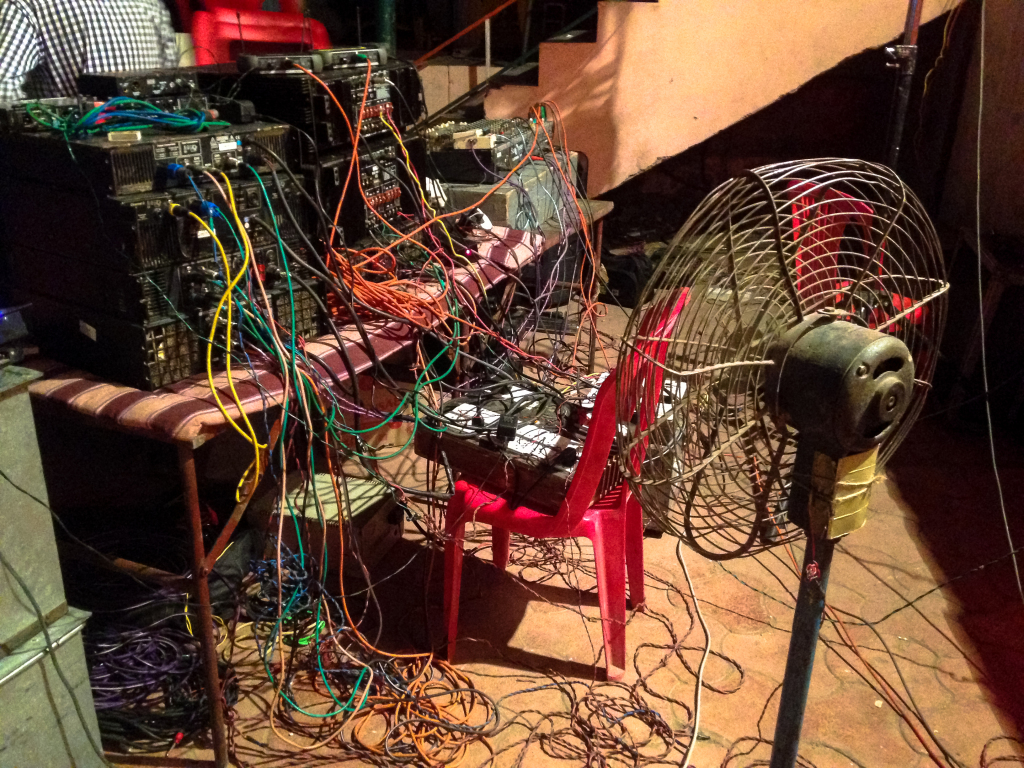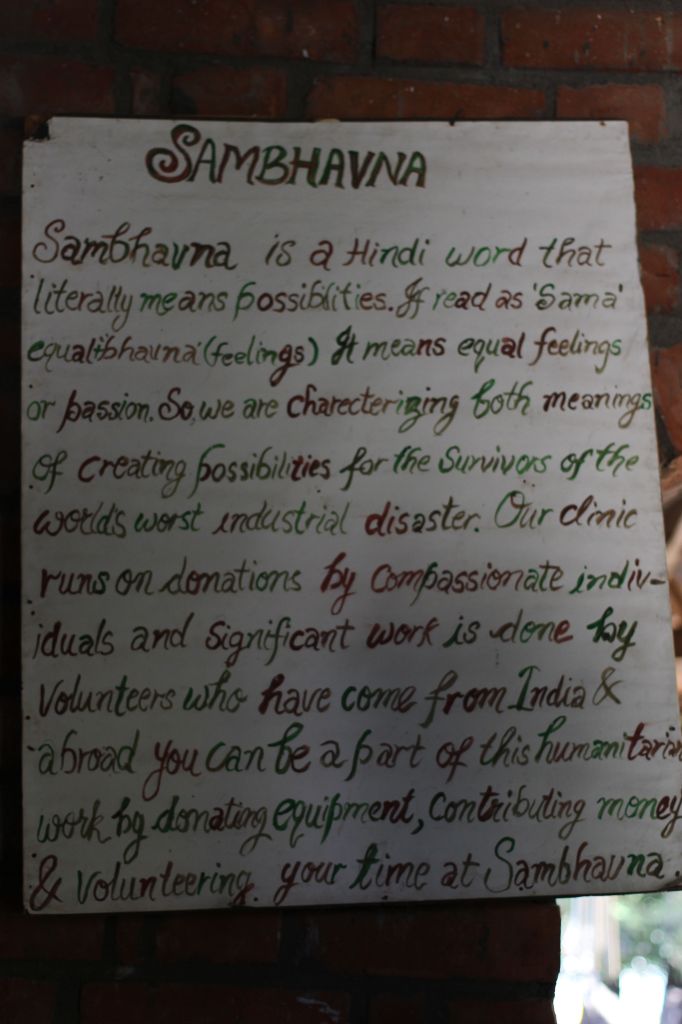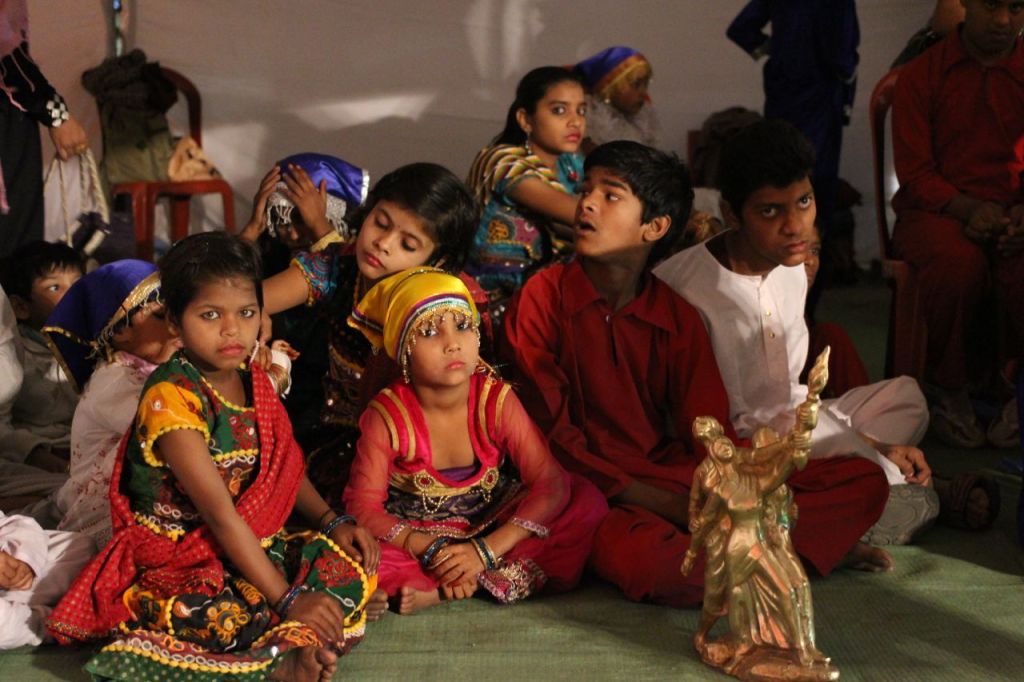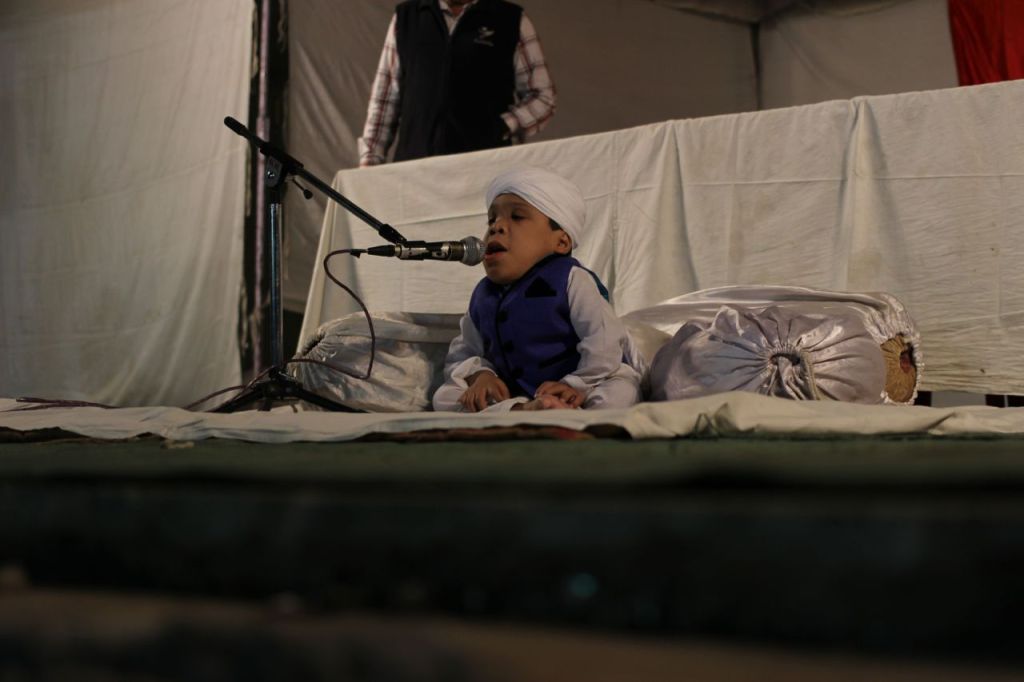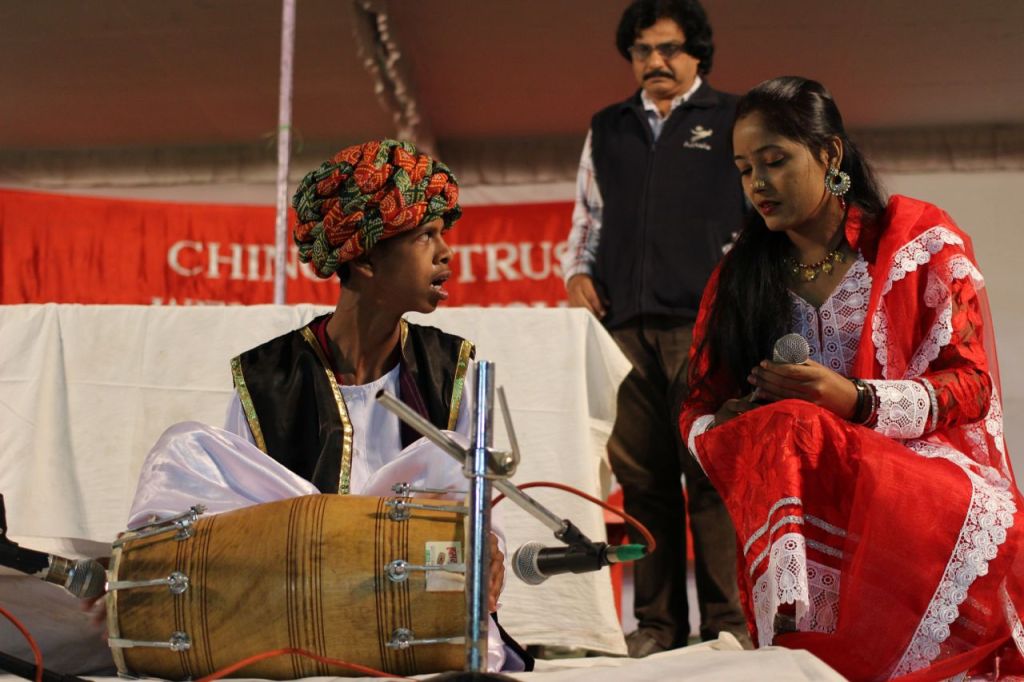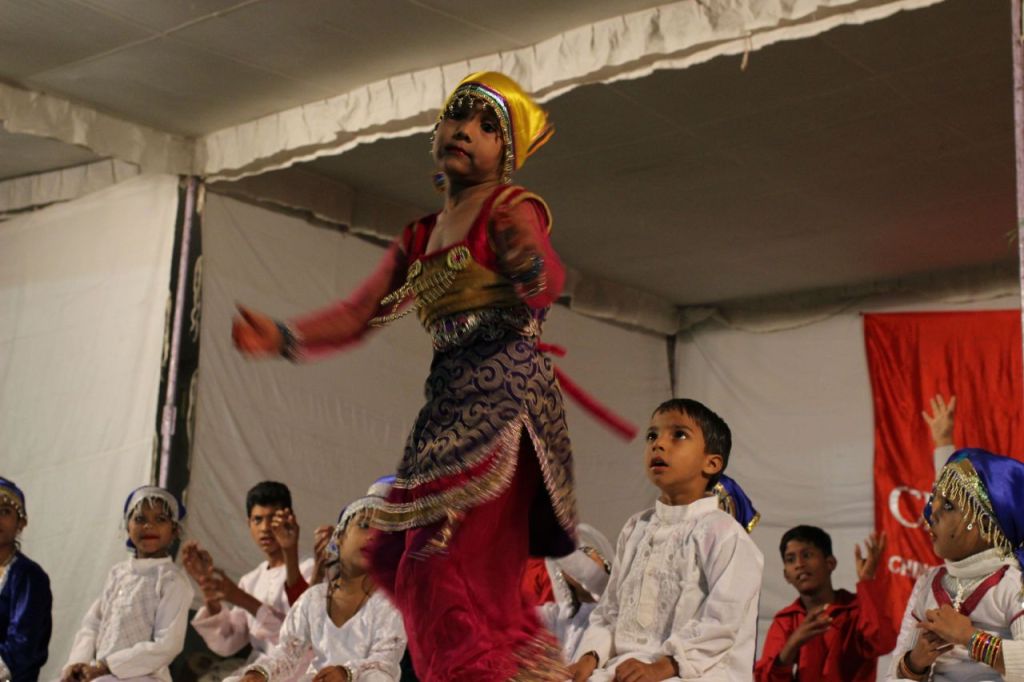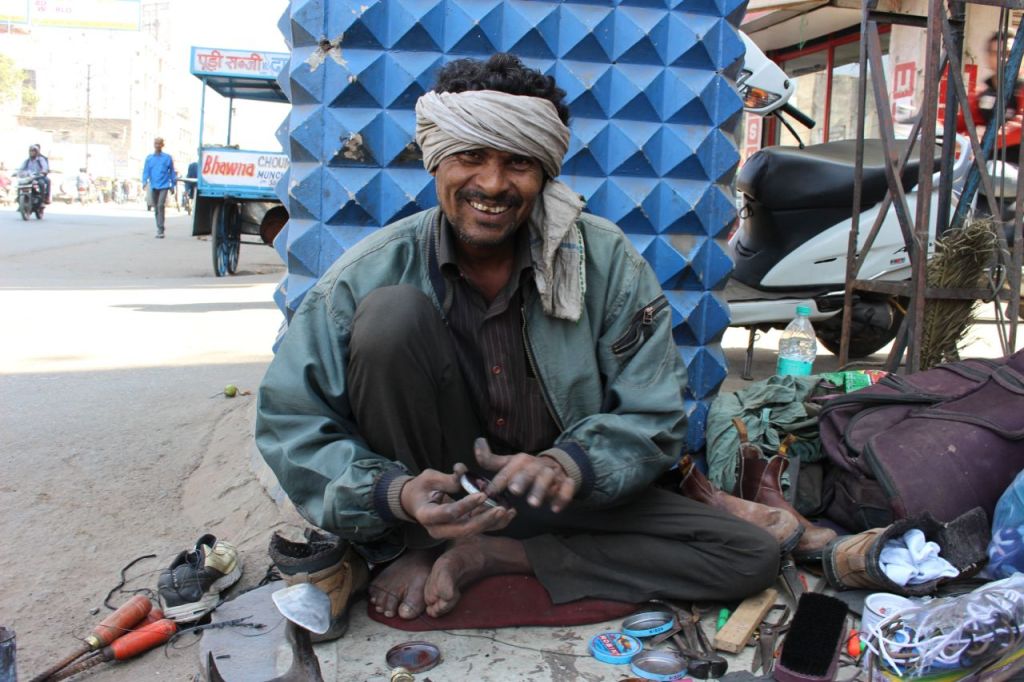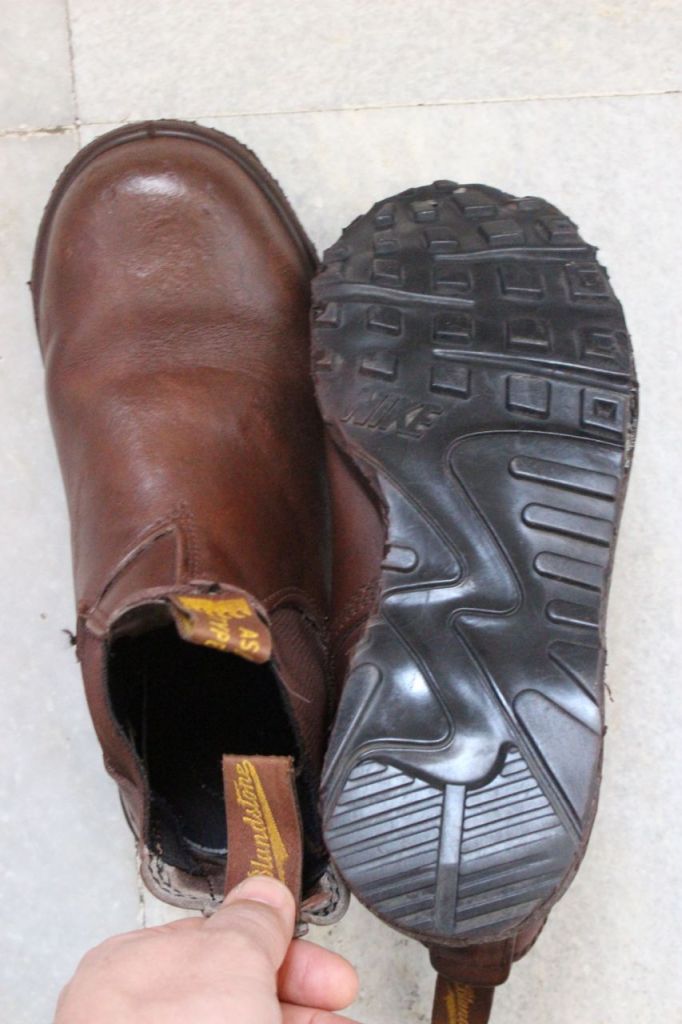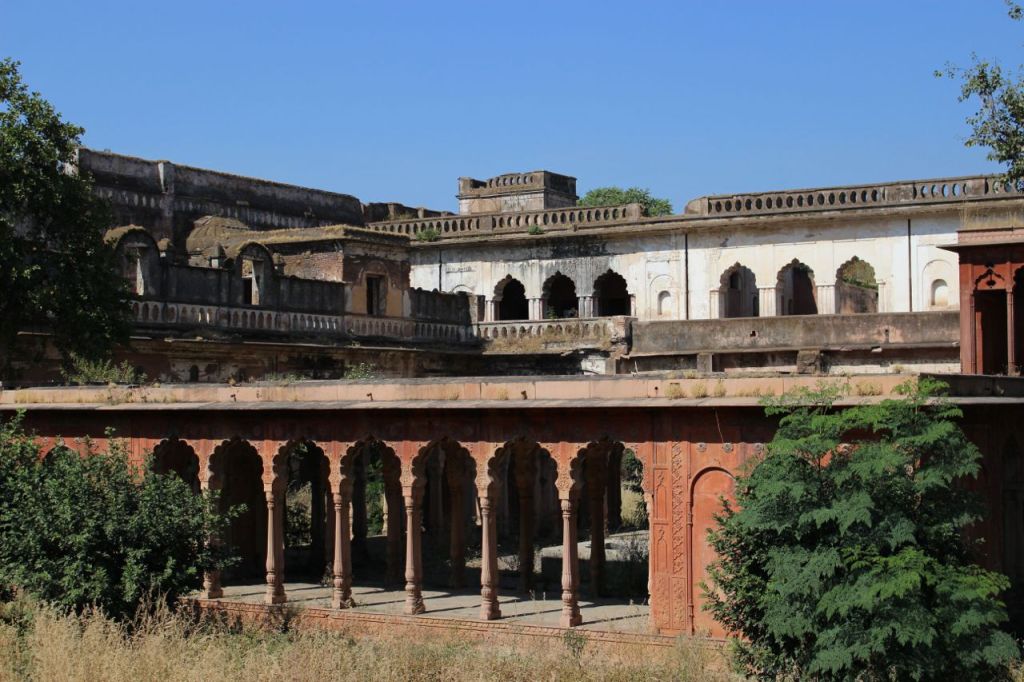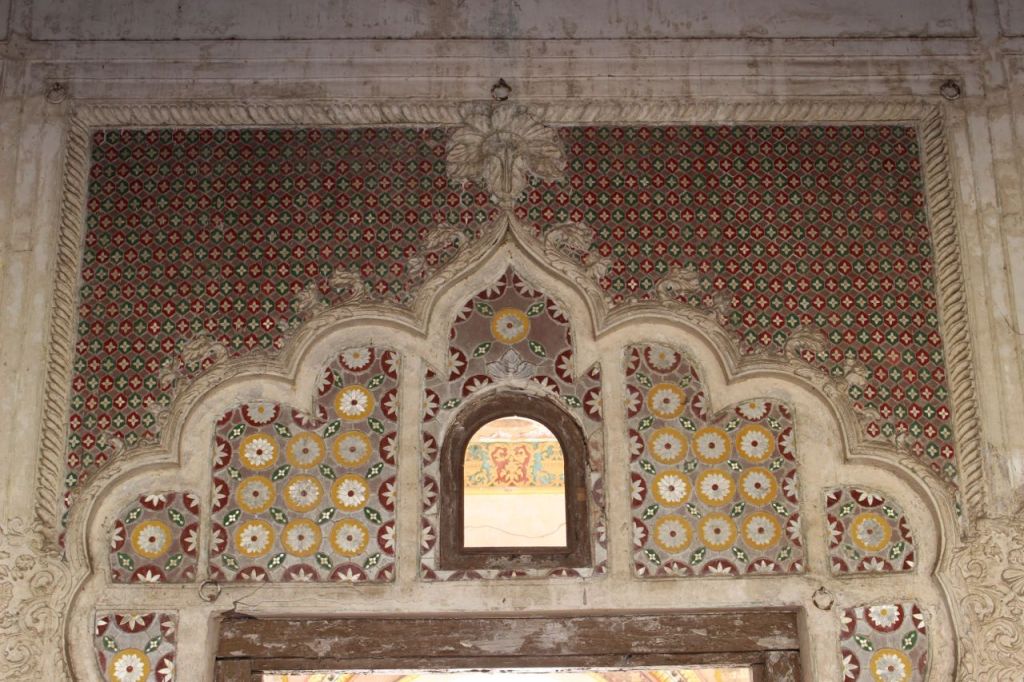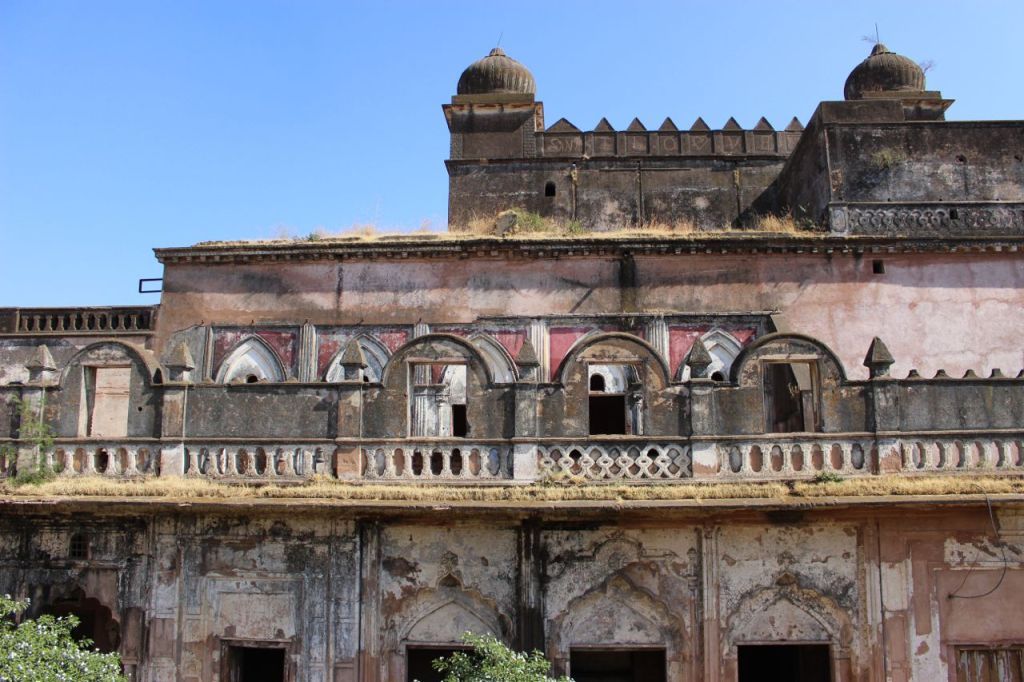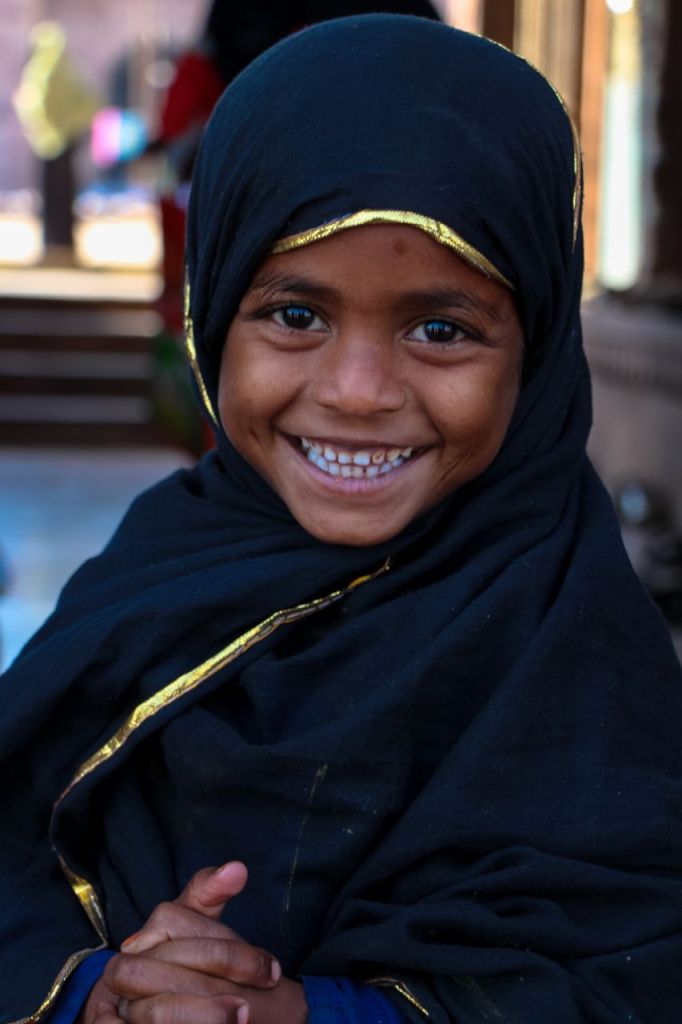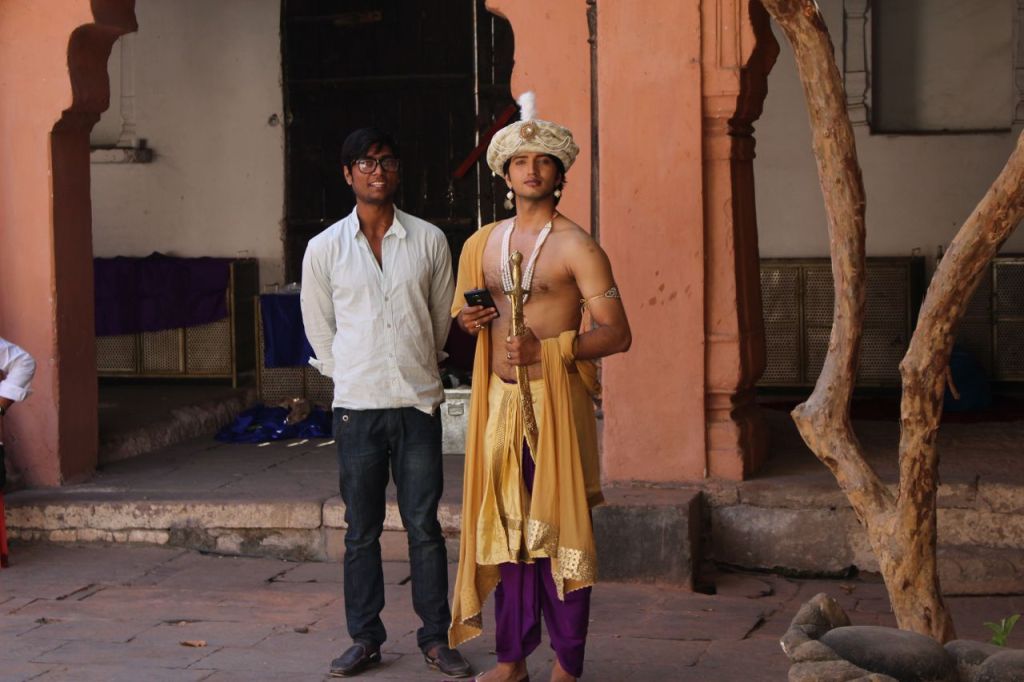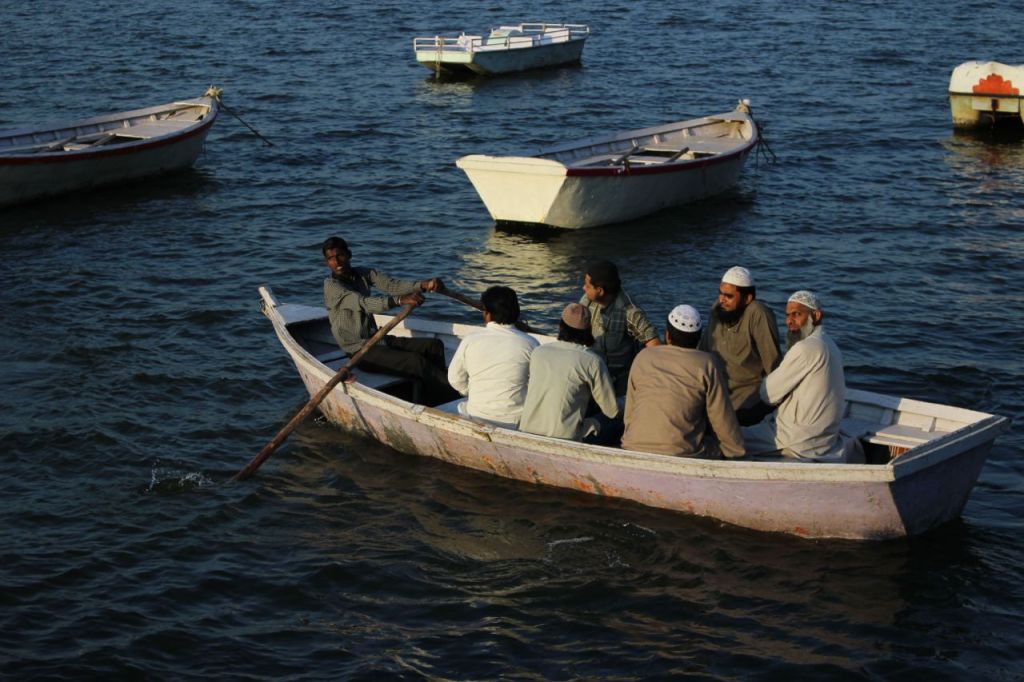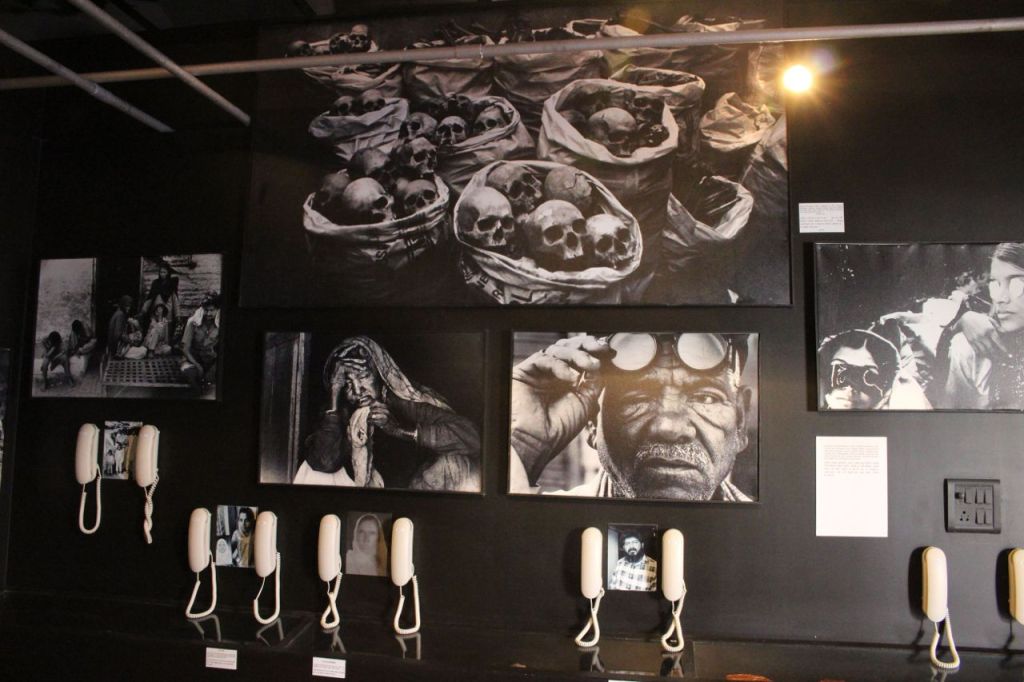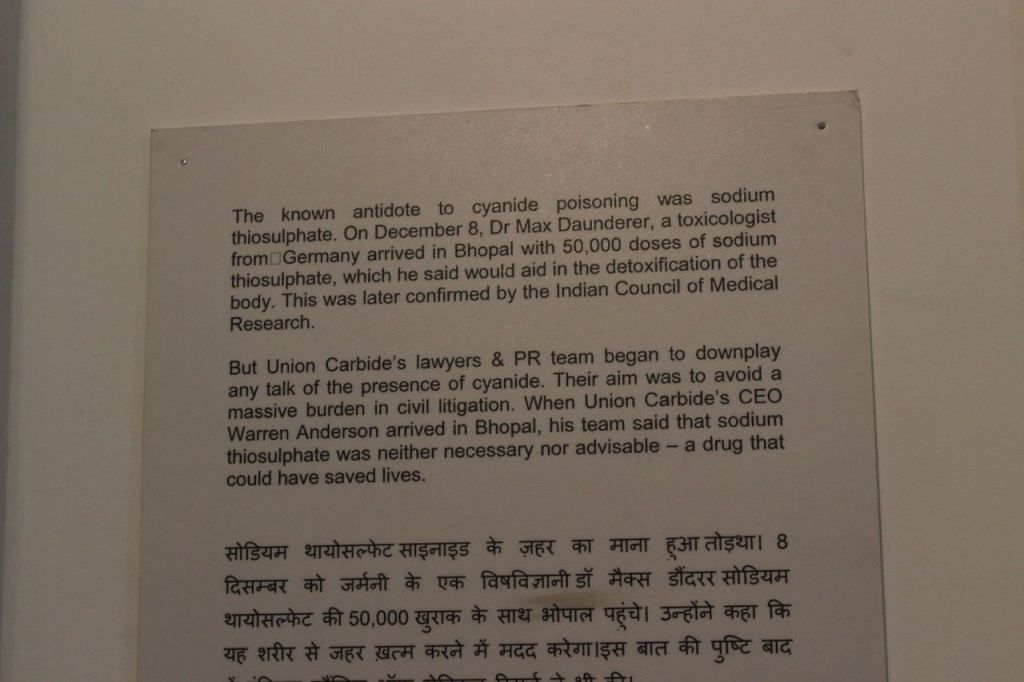Click Here for Chapter One. For pictures only, check out Ed’s Photo Gallery. Or, have them both open for a multimedia experience!
Dec 2 Day 4: Bhopal
Ed was 14 years old when the Bhopal Disaster happened. He was affected deeply by the news coverage at the time, and it never left him: 25 years later, and with the support of a Toronto Arts Council creators’/composers’ grant, he and Suba wrote the song “City Of Lakes” in memoriam, with all sales donated to the Sambhavna Clinic. Suba and Ed vowed to perform the song in Bhopal for the 30th anniversary, and this became the genesis of our tour.
(If you don’t know much about this event, the worst industrial disaster the world has ever known, click here for a primer. So much of this journal entry revolves around it, so it’s worth your time.)
After our 17-hour train journey, we arrive in Bhopal around 4pm and hit the ground running… or more accurately, marching. After checking in to our hotel (and, mercifully, changing clothes) we head straight to the Iqbal Maidan for the torchlight march, a 4.5-km walk to the Union Carbide plant, Ground Zero for the disaster. The mood is high-energy, intense, but positive. Young and old alike hold torches high and chant. Even the crazy traffic is no match for the hundreds of marchers.
An amusing subplot is the game called “Spot The Soundman.” In India, it doesn’t really matter how much preplanning you attempt to do: 75% of the organization happens once you’re on the ground, and it’s all going to change anyway. We are notified that the soundman will meet us at the square. But… he won’t arrive until after the march starts. We (and our new friend Michael, who is “volunteered” to liaise with us and the soundman) don’t want to miss the march, so we arrange to meet him halfway. This involves trying to follow Michael through the torchlit crowd, and the loony traffic, trying to find the “D.I.G Intersection” where we all (theoretically) will meet. Thankfully this turns into a more sensible “meet us at the end of the march” plan, and it all works out. The march ends with some rousing speeches in Hindi, a collective dousing of the torches, and an autorickshaw ride back to our hotel for beer, a late dinner, and a real bed.
Dec 3 Day 5: Bhopal
To-date, this is our most intense day on the tour, and we’re not even a week in.
The rule of thumb in India is “anything can happen, and probably will.” Today covered that one in spades. First, a little trip to the ATM machine. (Remember the “one errand per day” rule? That’s all we attempted today.) On the way home, after bumping into another protest…
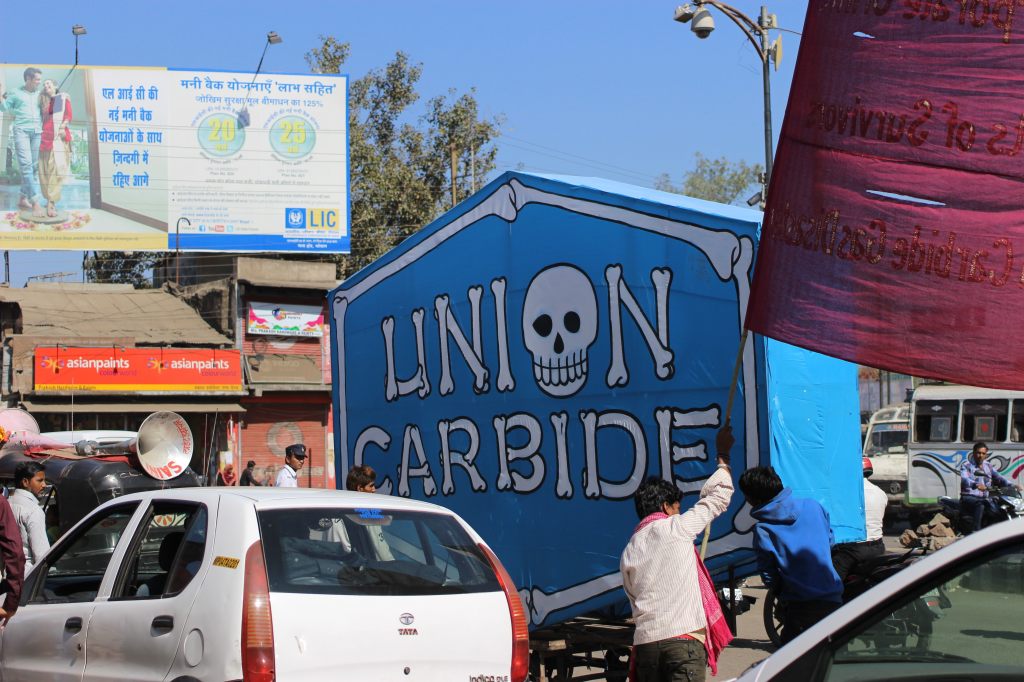
Suba hears music coming from a doorway. It turns out there’s a little house concert happening, and we are invited in. We arrive just in time for the tabla solo, and it takes little time for them to realize that Ed is a tabla player. He is invited to play a solo.
Then, we are invited to play for them. So, we do our heavily-adapted version of “The Trouble With Hari.” Suba’s choking on the roasted-chili smoke coming from the back room, Dylan’s playing harmonium for the first time in his life, and Ed’s playing someone else’s tabla, in a different key. Here ‘tis…
We make friends with the people there, especially with Neha, a precocious 15-year-old who acts as translator for us. And we begin to learn a little of the Bhopali spirit. Bhopalis are an especially warm people, so it seems. Everyone we meet has a gentle, soulful quality about them. They look you deep in the eye even just to say “hello.” After one day, we have enough dinner invitations to stay in the city for a month.
During the house concert, Ed takes a phone call: we’ve been asked to appear at Radio Mirchi (“Radio Chili.” Catchphrase: “It’s Hot!”) for an interview and performance. When? In an hour, of course. Back to the hotel to grab our instruments and stuff them (and us) into a couple of autorickshaws (note: Dylan’s bass is exactly one autorickshaw wide). The interview/performance is quite fun, and in the course of it, they ask if we know any Bollywood songs. Well, we have one that works well with our 7- and 5-piece versions of the band: Dum Maro Dum, a 1970s hit by R.D. Burman. Can we work it out with three? We do a quick runthrough and decide that Ed can cover all the drum parts, and Dylan the bass, guitar and organ parts (singing some of them when running out of limbs). It goes over quite well. “It’s Hot!” We’ll later discover that, maybe, it’s a little too hot. But more on that later.
The folks at the radio station are so thrilled by our live performance that they coax us into staying a bit longer to create on-the-spot live stings for their particular radio programs. Suba got to sing and speak on-air in Hindi, as well.
Back to the hotel to grab concert clothes and run off to soundcheck, worried that we might be late.
Once again, how naïve of us.
We have, of course, forgotten about the concept of “Indian Stretched Time.” We arrive, and promptly wait. They had brought in rockstar-level speakers for us, powered something like this:
The concert itself goes very well. People aren’t afraid to show their enthusiasm for every one of Ed’s tihais, Suba’s melismas, or Dylan’s beatboxing. We play Dum Maro Dum, and the crowd goes wild. They immediately ask us to play it again. We oblige, at the end.
Then it gets intense.
In their enthusiasm, the crowd rushes onstage to shake hands, get the free download cards we offer, exchange business cards (which is a very socially-significant ritual in Asia, given and received with reverence), and talk to the band. Ed and Dylan frantically dismantle enough gear to make sure it doesn’t get trampled, and we lose sight of Suba. At this point, we turn the pen over to Suba to tell us what happened:
The civilians mob the stage. The police are at their heels (at least 10 that I can see at first glance) and they are yelling at the civilians and ordering me (in a language I can’t understand) to refuse to sign autographs. They escort me off the stage and I’m trying desperately to find anyone who can become instant translator. A few familiar faces come to my rescue. They tell me that the police are urging, nay, forcing me off the stage, “for my safety.” Ironically, they lead me to the middle of the square which is some distance from the stage and much more open, and now more civilians are coming within reach of me. They tell me to sit down and relax, but I can’t, and in this sea of people and chaos, I can’t find my band mates who I assumed were right behind me. I hear the voice of another police officer at the microphone I had just used, screaming at the remaining civilians on stage to vacate the premises. My handlers are calming me and explaining that the crowd went wild especially after the reprise of Dum Maro Dum, and still many audience members are meeting and greeting me (though it’s a tad less chaotic). As the crowd disperses a while later, I finally see Dylan and Ed, still on the stage, tearing down the gear. All’s well that ends well, and we are spirited away in a couple of autorickshaws.
The Bollywood cult classic Dum Maro Dum (“Take A Puff” or “Take a Hit”) was risqué for its reference to drug use when it came out in the ‘70s, and apparently still is. Plus, we learn later that the Iqbal Maidan has what they called a “mixed” audience: rich and poor, genteel, and… less so. All the ingredients needed for an intense situation. The entire day calls for some serious decompression: it takes a few beers and a 2:30am bedtime to come down off the buzz from the day.
Dec 4 Day 6 – Bhopal
We wake at 10am: after several days of jetlag, it’s our first full night of sleep. We have breakfast and head out to the Sambhavna Clinic.
Run by activist Sathyu Sarangi and his wife Rachna Dhingra, the Sambhavna Clinic is an oasis of healing in busy Bhopal. It serves those who still live with the effects of the disaster: respiratory problems, blindness, Downs’ syndrome, and deafness are just a few of the ongoing health problems of the thirty-thousand-plus who have been treated here. There are so many health problems that no-one has really effectively categorized them.
Sathyu, an engineer/activist who wears the head-dress of the lowest working class, shows us the many press clippings of our concert and the related events surrounding the commemoration. As he does so, an old man comes in. He is short of breath, and needs help with his puffer. Sathyu patiently puts down what he is working on and helps the man breathe. As we leave the room, the old man looks at us, kindly, and it feels as though he’s staring into our souls.
Ed has been here before, and shows us around: organic garden, the library, the pharmaceutical room where Ayurvedic medicines are made… definitely an atmosphere for healing, physically and spiritually.
Off to the Chingari Rehabilitation Centre, a place that takes care of kids affected by the disaster. There is an awards ceremony that night given to an outstanding female activist, where we played last night, and we’ve been invited last-minute to give a musical offering. The kids here will also perform, and they are rehearsing one of their pieces.
We wait around for half an hour or so, to have a ten-minute meeting with one of the organizers. We are fast learning that nearly all business here is conducted not through email, or over the phone, but face-to-face. It seems quite old-fashioned, and slow, but there is something to be said about it, in a land where everything happens in its own time.
Later that night, we play the ceremony. The entire thing runs incredibly long: the poor kids, waiting for their chance to perform, are getting antsy…
![]() … but finally get their turn. After hours of waiting, our set is shortened to three songs. There were unending speeches and presentations. But these kids, for us, were the stars of the show.
… but finally get their turn. After hours of waiting, our set is shortened to three songs. There were unending speeches and presentations. But these kids, for us, were the stars of the show.
Dec 5 Day 7- Bhopal
After the jetlag, errands, trains, and the intensity of the Bhopal commemorations, we finally get some sightseeing time. But first, Dylan decides to reincarnate his boots.
He brought from Canada a pair of Blundstones with ripped-up soles, knowing that a shoe-repair guy could re-sole them, cheaply. He finds this guy…
… and this is what he gets:
Yes, that’s right. BlundstoNikes!
At noonish, we start our sightseeing. Our guide is Mohsin, who was also one of Suba’s “handlers” at our first gig in Bhopal. Having someone local show you around definitely has its perks. We pull up to a big, imposing building, Mohsin exchanges a few word with a security guard, and the door opens to this:
It’s the Taj Mahal (not the Taj Mahal: a Taj Mahal), a 19th-century palace, closed to visitors and left to ruin. It’s massive, looks out onto a lake, and is beautiful in its decay.
We head to the Taj-ul-Masajid Mosque, built by one of the several female sultans that ruled the area around Bhopal once upon a time It’s prayer-time, so we can’t go inside. We are nonetheless accosted by urchins, but it’s pretty hard to say “no” to a face like this:
(Her mother was canny enough to make sure the kid hit us all up for cash.)
Next: another palace, but we can’t really visit. It’s being used for a TV shoot. We make friends with a royal figure.
Off to visit a friend of Mohsin: Divyu, a heavy-metal drummer, and owner of one of the two drumkits in the 2-million-people city of Bhopal. Ed remarks that one could make a killing renting musical equipment here. We sit on his terrace and relax, while his brother endlessly rides laps around the 300-square-foot terrace, on his bike, three stories above the street. It feels like we’re in an absurdist movie.
Divyu takes us to a nice restaurant, and then to the lake. More words exchanged with another security guard, and we get a nice view on the pier. Turns out that Divyu’s father is vice-president of the boat club. It’s all in who you know, it seems.
Next, the cinema, where we see the movie “A Prayer For Rain,” released here in Bhopal on the anniversary of the disaster. Martin Sheen plays Warren Anderson, head of Union Carbide and Public Enemy Number One. Based on what we’re learning about the disaster, it seems the movie ended way too soon in the trail of damage, and the Warren Anderson character may have been given an easy ride.
Dec 6 Day 8 – Bhopal
There is a tradition in India that, on your last day in town, everyone wants a visit with you. The hospitality and intention is lovely: the timing, less so.
We enjoy a late-breakfast tea with our friends from the house concert from a few days before, and after a few family photos, head off to the Remember Bhopal Museum. It’s one of the only museums of its type curated in part by the victims themselves: the feeling is – and rightly so – that they are the only ones who can truly tell their own story. It is at once heartbtreaking, informative, well-executed, and anger-inspiring.
Back to the Sambhavna clinic for a quick errand (it took a couple of hours, which translates as “quick” here). As we round the street to our hotel in our autorickshaw, a figure shouts something at us. We get back to our hotel, and the man mysteriously appears in the lobby. He has been sent by his friend, who wants a meetup with us. We protest that we’re leaving, and have no time, but he won’t hear it: he’s under instructions that we must go with him to meet this man, a record-shop owner and would-be concert promoter whom we met on our first night. We escape to our rooms and pack.
Shortly thereafter, we get a call from the lobby: someone needs to meet with us. Sure enough, it’s the record-store owner. He’s less pushy than his minion, but we nonetheless must fend off invitations to see his store, and are obliged to take a few dozen pictures, which takes some time as the minion can’t seem to operate a point-and-shoot camera. We are just about to go out for dinner, but instead escape to the rooftop of the hotel, where we peer off the edge to make sure they have left before daring to venture outside.
After dinner, off to the night train. Conveniently, Mohsin is there as well… and it’s good that he is. Typically, our train was late arriving, and other trains were scheduled for the same track. A train pulls up, but, not seeing the train number, we don’t know if it’s ours, and decide not to risk jumping on only to wind up on the wrong end of the subcontinent. Mohsin then shouts “This is your train…. And your car is way up ahead. You’d better run!” So, we do…. With 250 pounds of luggage in tow. We hoist it up onto the car, the train rattles off, and we breathe a sigh of relief.
Ed’s the real photographer in the band, so check out Ed’s Photo Gallery.
Up next: an intermission in Delhi, and Nepal!
